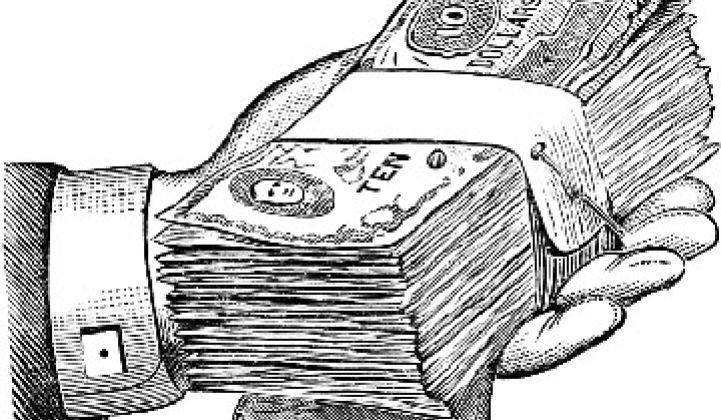The cleantech sector saw an uptick of venture capital investment in the third quarter, despite the backlash that’s come in the wake of the Solyndra bankruptcy. But continued market volatility and poor third-quarter IPO performances paint a dire forecast for cleantech companies looking to enter the public markets through the rest of the year.
That’s the news from Cleantech Group’s third quarter investment briefing Wednesday, which painted a mixed picture for global cleantech investing. The good news was in the tally of VC activity in the second quarter, which rose to $2.23 billion -- up 12 percent from the second quarter and 23 percent from last year.
That’s still well below the first quarter 2011 tally of $2.72 billion in green VC, but considering the bad news we’ve seen for the sector in the past three months -- namely, the bankruptcy of thin-film solar module maker Solyndra, not to mention bankruptcies of Stirling Energy Systems and SpectraWatt -- it’s pretty good, said Cleantech Group CEO Sheeraz Haji.
“Despite all the negativity around Solyndra, it appears that people are putting money to work and doing business,” he said. The good news extended to an uptick in early-stage deals, which saw deal count rise to more than 70 for the first time since last year -- although the average amount of early-stage deals, at $6.1 million, was down slightly compared to previous quarters.
Where VC saw some signs of life, however, the IPO scene looked increasingly bleak. Cleantech IPOs fell to $1.7 billion in the third quarter, down 23 percent compared to the second quarter and far below the record-setting $8.1 billion from the fourth quarter of 2010. In fact, the third quarter’s IPO tally represented a two-year low.
Haji pointed to global economic uncertainty and the increasing volatility of public markets over the past three months as driving investors toward safer investments. The performance of the 14 cleantech companies (11 of them in China) that did go public last quarter was dismal, with all but one, U.K.-based Waterlogic International, seeing declines in their share price since their debut.
The upshot, said Haji, is that other cleantech companies planning to go public are going to see a very hard road ahead. “I think the window is closed, except for the companies that are clear leaders in their fields and want to push through some headwinds to go public.” How that might affect the recently announced IPO plans of such green companies as Silver Spring Networks, Fulcrum Bioenergy, and Elevance Renewable Sciences will be one of the most closely watched issues in the coming months.
Here are some breakouts from the report:
- Cleantech Group named “energy storage” the top-grossing cleantech sector in terms of money raised, with $514 million raised, beating out solar’s second-place showing of $350 million. Some big winners included battery makers Boston-Power with $125 million, Nexeon with $65 million, Aquion Energy with $30 million, Leyden Energy with $20 million and EnerVault with $8.5 million.
But there’s a catch: Cleantech included fuel cell companies in its energy storage category, which included such major third-quarter investments as the $150 million for Bloom Energy and $73.5 million for ClearEdge Power. Backing out those two fuel cell rounds would reduce the storage tally to $290 million, less than solar. Haji conceded that including fuel cells in the energy storage category was problematic, and that Cleantech might not continue to do so in the future.
- The solar sector’s $350 million in VC included some big investments in solar panel and cell makers, including thin-film startups like HelioVolt, despite the backlash surrounding the Solyndra debacle. But there was also an increased focus on “downstream” solar companies, such as inverter and materials makers, installers, and solar financing and software startups such as Clean Power Finance.
-The United States continued to lead in greentech VC investing, with $1.66 billion in deals, followed by the U.K. with 1$84 million, India with $165 million, and China with $138 million. But Continental Europe saw third-quarter green VC investment decline, an outcome no doubt tied to the dire financial and economic crisis gripping Europe.
- Corporate merger and acquisition activity in the cleantech sector fell to $11.81 billion in the third quarter, down from $13 billion in the previous quarter. The frenzied gobbling-up of smart grid, solar and energy efficiency companies we’ve seen so far this year appears to be fading a bit. Still, Haji noted that M&A was still “very strong” for 2011 compared to last year.



